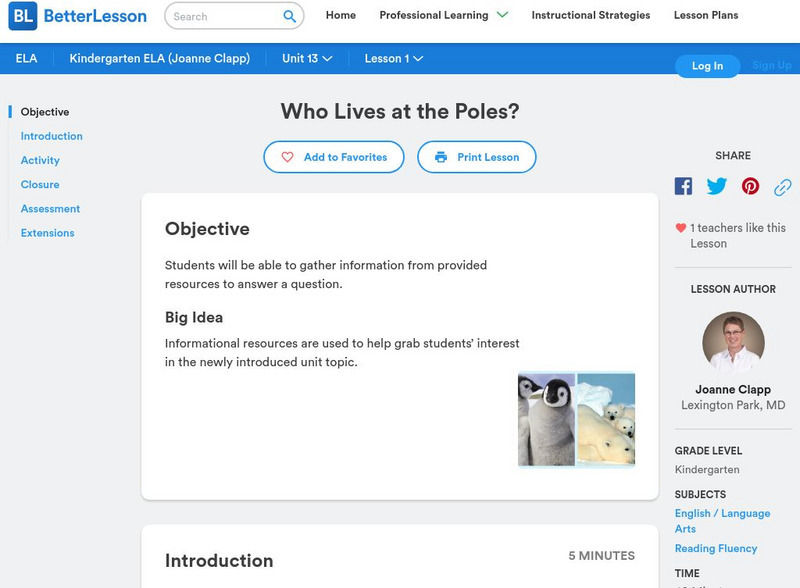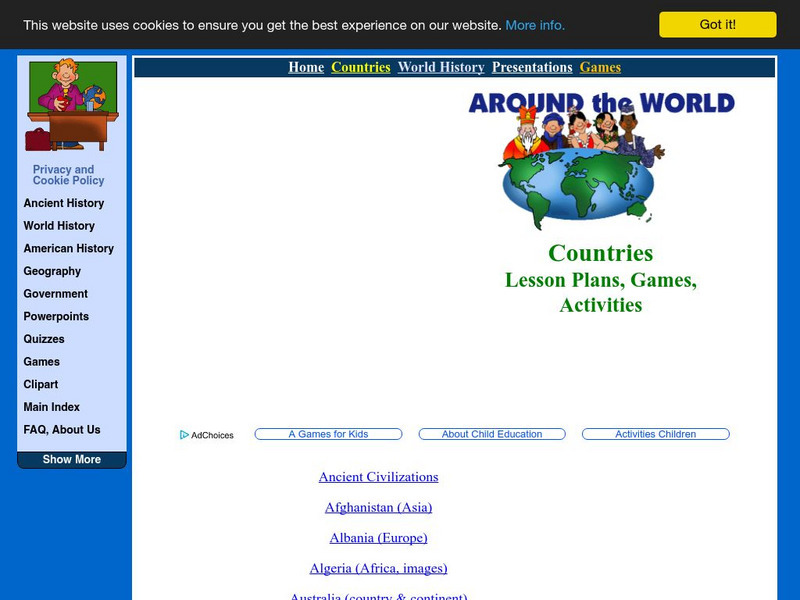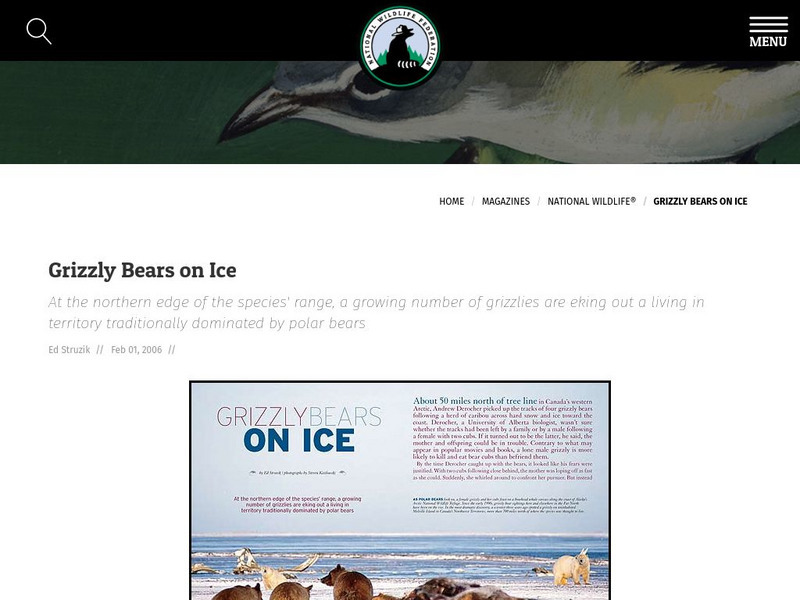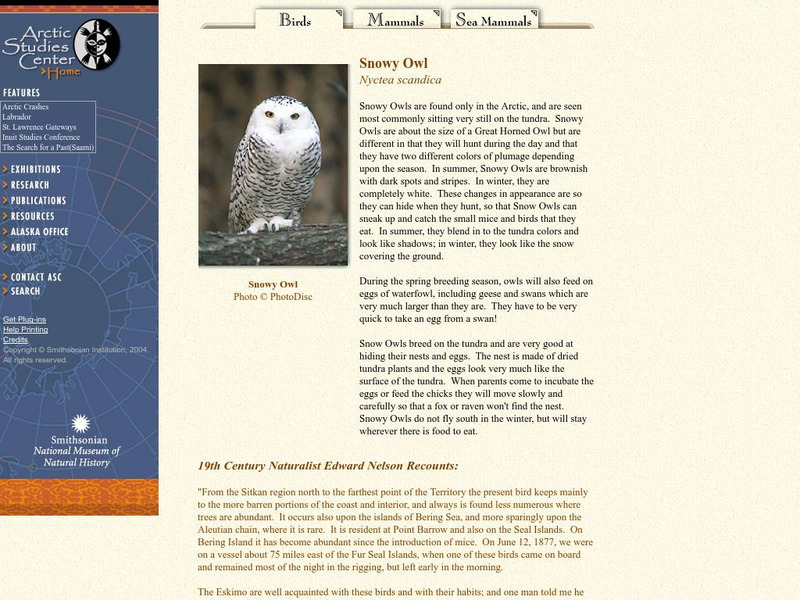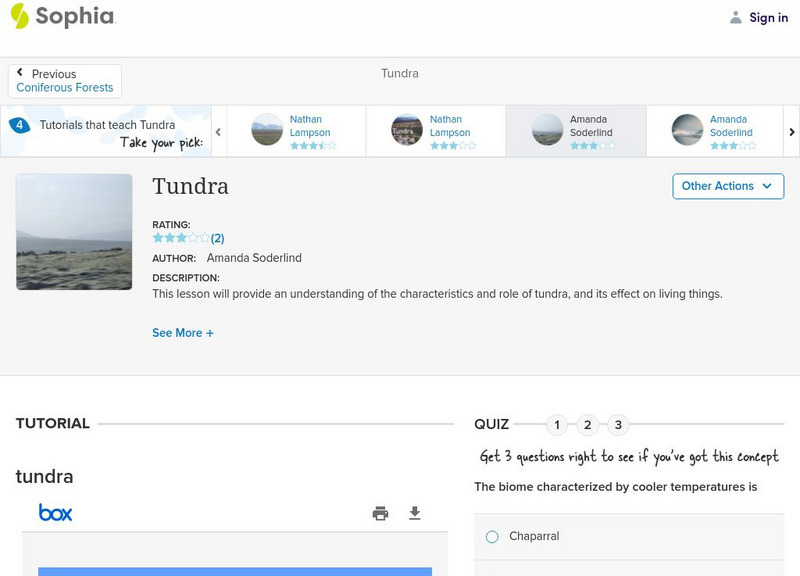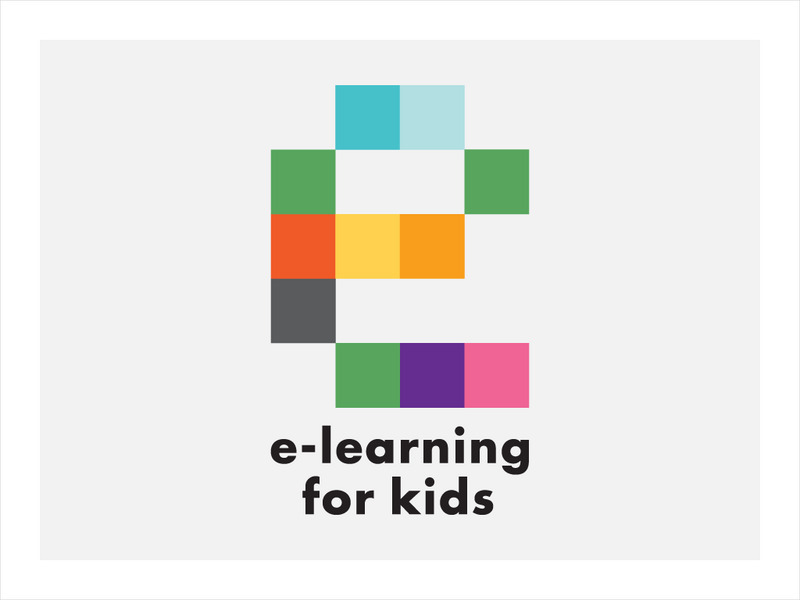Canadian Wildlife Federation
Hinterland Who's Who: Muskox
Get the facts about the muskox. Besides finding a detailed description of this resident of Canada?s arctic tundra, you?ll also learn about some of its unique facts and characteristics. Also included in this Mammal Fact Sheet on the...
Woods Hole Oceanographic Institution
Polar Discovery: Compare the Poles
A detailed comparison of many aspects of the two polar regions. Includes physical features, seasons, weather, types of ice, plants and animals, human population, and climate change.
Curated OER
National Park Service: Bering Land Bridge National Preserve
Hands-on curriculum unit in which students will explore the Bering Land Bridge National Preserve and learn about the past and present cultures of this arctic landscape. Students will also discover the plants, animals, and geology of this...
Other
Passport to Knowledge: Passport to Antarctica
Visit Antarctica, the most remote continent, through this site that covers the climate, animals, geography, and first-person accounts from visitors in the 1990s.
Better Lesson
Better Lesson: Who Lives at the Poles?
In this lesson, students will be able to gather information from provided resources to answer a question. Included is a video of the introduction of this lesson, pictures of students' completed work, and examples of books on the subject...
The Wild Classroom
The Wild Classroom: Biomes of the World: Polar Ice Caps Biome
Learn about the polar ice cap ecosystem. Find out about plants, animals, adaptations, and conservation efforts.
Enchanted Learning
Enchanted Learning: Biomes
Discover the hidden treasures in the different habitats on the earth! The earth is filled with many biomes. Examples of different biomes are listed and include hyperlinks to additional information such as the animals found there.
Lin and Don Donn
Lin and Don Donn: Countries and Continents
This resource provides links to ideas and for teaching about the Arctic Circle and about the Antarctic. There are also links to additional sites.
National Wildlife Federation
National Wildlife Magazine: Grizzly Bears on Ice
Grizzly bears are moving north and living in areas traditionally inhabited by polar bears. Their survival in this environment is shaky at best as politicians consider opportunities for oil exploration and the building of pipelines in the...
Curated OER
Educational Technology Clearinghouse: Maps Etc: Animals of Asia, 1906
A pictorial map from 1906 illustrating the various animals that live in regions of Asia. "The white bear, the seal and many sea birds are found near the Arctic shore. In the cold parts of Siberia tribes of yellow people keep herds of...
PBS
Pbs Learning Media: Monarch Migration
This video from Nature features the start of the monarch butterfly's northward trek. [3:02]
Smithsonian Institution
National Museum of Natural History: Snowy Owl
This Smithsonian website has a brief, but thorough, article on the Snowy Owl that also includes a picture and an extensive quote from the 19th Century naturalist Edward Nelson.
Enchanted Learning
Enchanted Learning: Taiga Animal Printouts
Colorful pictures of animals found in the taiga biome such as the arctic fox, bald eagle, gray wolf, and muskrat. Information is provided about each animal when clicked.
Houghton Mifflin Harcourt
Harcourt: School Publishers: Exploring Ecosystems
Compare and contrast three very different ecosystems - the Sonoran Desert in Arizona, the Florida Everglades, and the Arctic Coastal Plain in Alaska. Learn what makes each of them unique, and about the adaptations plants and animals had...
World Wildlife Fund for Nature
Wwf: Our Earth: Ecoregions: Habitats: Polar Regions
A simple introduction and overview of the polar regions. Includes a link to information about animals that live in a polar habitat.
Sesame Street
Sesame Street Games
These interactive games allow young children to explore the jungle, the oceans and the arctic regions. Children can look for animals in that area of the world.
McGill University
Mc Gill University: Canadian Biodiversity: Ecozones: Taiga Shield
This ecozone stretches eastward from the Taiga Plains to just south of the Southern Arctic. This brief, concise description includes a collection of images of the animals and birds native to the location. Many of the images include...
The Franklin Institute
Missouri Botanical Garden: Ocean Facts
Click on all the links to find out many interesting facts about the ocean. Why is the ocean blue? Why is it salty? Where do most of the animals and plants live? Which ocean is the biggest? The deepest? How much of the Earth is covered by...
Sophia Learning
Sophia: Tundra
Find out the basics of the Tundra biome, including the climate, location, and characteristic animals and plants living there.
University of California
Polar Bear Capital of the World
Churchill, Canada is known for its polar bear population before the bay freezes. Find out all about this incredible visitation every year. Read polar bear facts, lore, rules of bear safety, and wildlife management applied to polar bears.
PBS
Pbs: How Much Tundra to Feed a Caribou?
An online activity that has stated objectives, activities, background information, evaluation and resources. A bonus - elementary and secondary extensions.
Other
Teaching Heart: Penguins
Use this site if you want to find ideas, lessons and activities related to penguins.
Other
Inuit Gallery of Vancouver: Inuit Sculptures
See photos of beautiful examples of Inuit sculpture, the "stone carvings of the Inuit people and Arctic animals."
E-learning for Kids
E Learning for Kids: Science: Nova Zembla: Why Do We Need Plants?
This module explores how plants help animals survive. Bobby is a scientist on Antarctica. He discovers many amazing uses of plants. Join him and help him learn.
Other popular searches
- Preschool Arctic Animals
- Math Using Arctic Animals
- Unit on Arctic Animals
- Lesson on Arctic Animals
- Arctic Animals Grade K 2
- Arctic Animals Poems
- Books About Arctic Animals
- Art Arctic Animals
- Graphing Arctic Animals
- Arctic Animals Wheel
- Arctic Animals Word Search
- Arctic Animals Crossword






